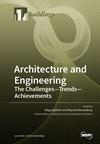用高强度钢筋加固的超高强度混凝土连续梁中的力矩再分布:数值研究与预测模型
IF 3.1
3区 工程技术
Q2 CONSTRUCTION & BUILDING TECHNOLOGY
引用次数: 0
摘要
在超高性能混凝土(UHPC)静力不确定结构的设计中考虑弯矩再分布,可以充分发挥构件的承载潜力,简化配筋细节,节约施工成本。由于超高性能混凝土(UHPC)具有区别于传统混凝土的优异性能,其弯矩再分布在 UHPC 结构中表现出新的特点。本研究开发了一个有限元(FE)分析模型,用于模拟和分析用高强度钢筋加固的 UHPC 连续梁的弯曲行为和弯矩再分布。模拟和测试结果与实验研究结果非常吻合。在有限元模型的基础上,对 9 个模拟的两跨 UHPC 连续梁进行了精细分析,详细讨论了破坏模式、荷载-位移曲线、支撑反力变化、钢筋拉伸应变以及弯矩再分布的全过程。随后,通过对 108 个模拟梁进行广泛的参数研究,探讨了 UHPC 连续梁中弯矩再分布的变化规律。研究参数包括中性轴深度系数、混凝土强度、钢筋屈服强度、梁深、跨深比、中跨与中间支撑截面的配筋比以及荷载形式。根据数值结果,建立了估算高强钢筋 UHPC 连续梁两级弯矩再分布的新公式。最后,对普通混凝土连续梁和 UHPC 连续梁的弯矩再分布进行了比较。可以看出,与普通混凝土连续梁相比,UHPC 连续梁的弹性弯矩分布相对较小,而塑性弯矩分布相对较大。总体而言,由于 UHPC 的高延性,UHPC 结构的总弯矩分布程度大于普通混凝土结构。本研究可为超高性能混凝土的实际工程提供技术参考。本文章由计算机程序翻译,如有差异,请以英文原文为准。
Moment Redistribution in UHPC Continuous Beams Reinforced with High-Strength Steel Bars: Numerical Investigation and Prediction Model
Considering moment redistribution in the design of ultra-high-performance concrete (UHPC) statically indeterminate structures can fully exploit the load-bearing potential of members, simplify reinforcement details, and save construction costs. Due to the excellent properties of ultra-high-performance concrete (UHPC) that distinguish it from conventional concrete, new characteristics of the moment redistribution manifest in UHPC structures. In this study, a finite element (FE) analytical model was developed to simulate and analyze the bending behavior and moment redistribution of UHPC continuous beams reinforced with high-strength steel bars. The simulation and test results exhibited excellent agreement with the experimental research. Based on the FE model, a fine analysis for nine simulated two-span UHPC continuous beams was conducted with a detailed discussion of the failure modes, load-displacement curves, variations of support reaction forces, tensile strains of steel bars, and the whole process of moment redistribution. Subsequently, the variation rules of moment redistribution in UHPC continuous beams were explored by an extensive parametric study of 108 simulated beams. The studied parameters included a neutral axis depth factor, concrete strength, yielding strength of reinforcement, beam depth, span–depth ratio, reinforcement ratio between the mid-span and intermediate support section, as well as load forms. According to the numerical results, new formulas for estimating the two-stage moment redistribution in UHPC continuous beams with high-strength reinforcement were established. Finally, a comparison of moment redistribution between normal concrete continuous beams and UHPC continuous beams was performed. It can be observed that the elastic moment distribution in UHPC continuous beams was comparatively smaller, while the plastic moment distribution was relatively larger than those of normal concrete continuous beams. Overall, the degree of the total moment distribution in UHPC structures was greater than that of normal concrete structures due to the high ductility of UHPC. The research in this study may provide a technical reference for the practical engineering of UHPC.
求助全文
通过发布文献求助,成功后即可免费获取论文全文。
去求助
来源期刊

Buildings
Multiple-
CiteScore
3.40
自引率
26.30%
发文量
1883
审稿时长
11 weeks
期刊介绍:
BUILDINGS content is primarily staff-written and submitted information is evaluated by the editors for its value to the audience. Such information may be used in articles with appropriate attribution to the source. The editorial staff considers information on the following topics: -Issues directed at building owners and facility managers in North America -Issues relevant to existing buildings, including retrofits, maintenance and modernization -Solution-based content, such as tips and tricks -New construction but only with an eye to issues involving maintenance and operation We generally do not review the following topics because these are not relevant to our readers: -Information on the residential market with the exception of multifamily buildings -International news unrelated to the North American market -Real estate market updates or construction updates
 求助内容:
求助内容: 应助结果提醒方式:
应助结果提醒方式:


